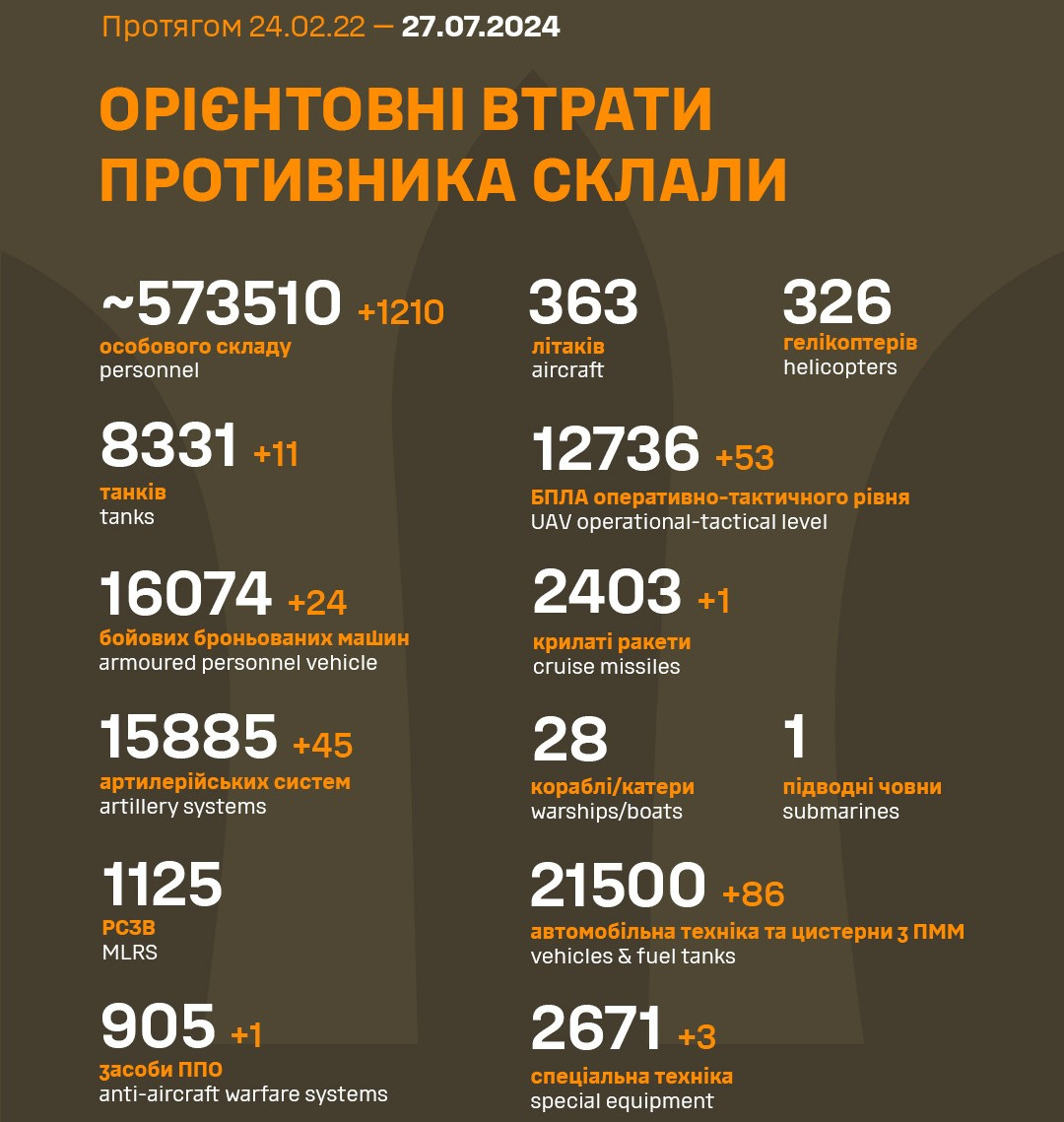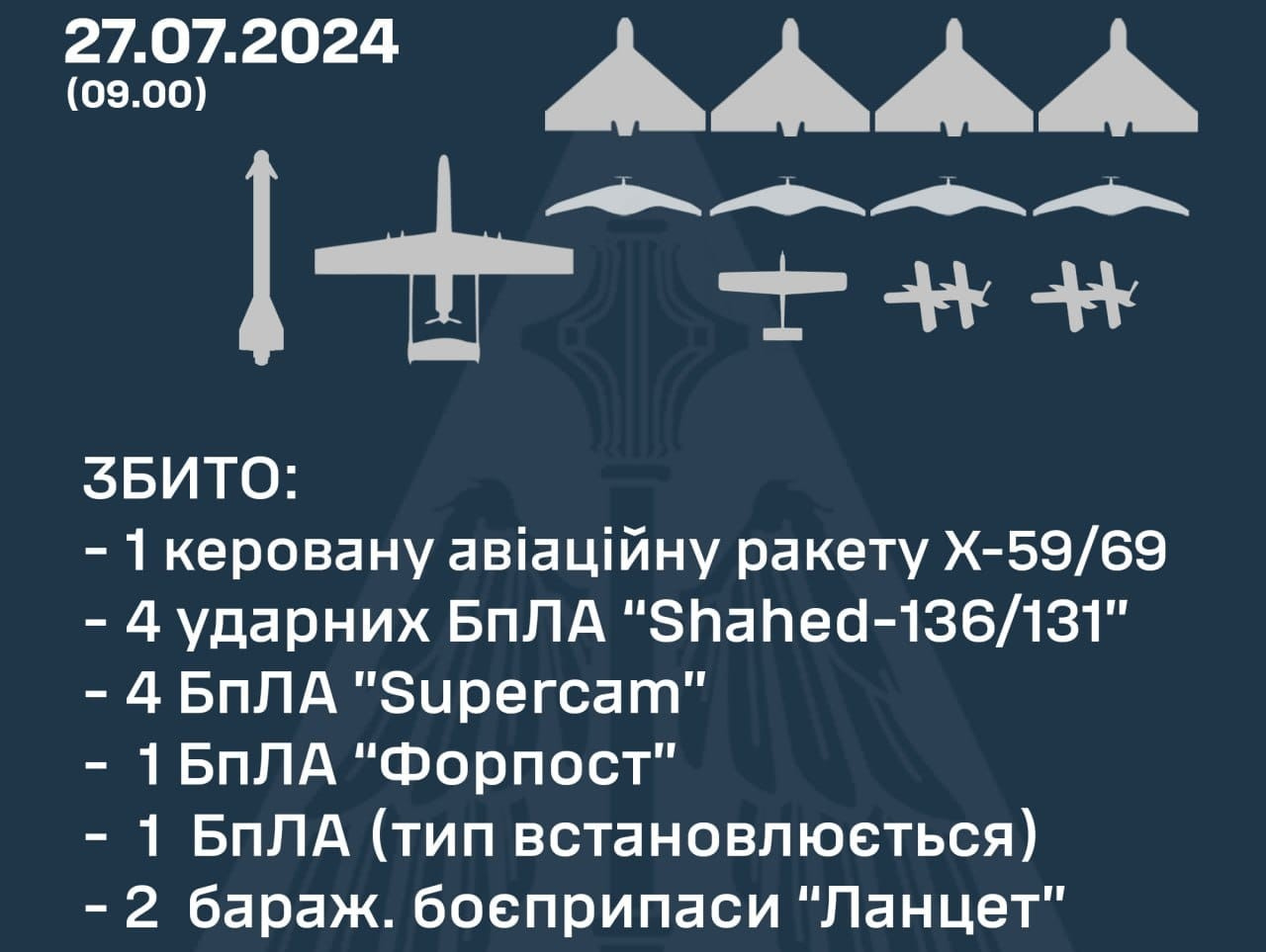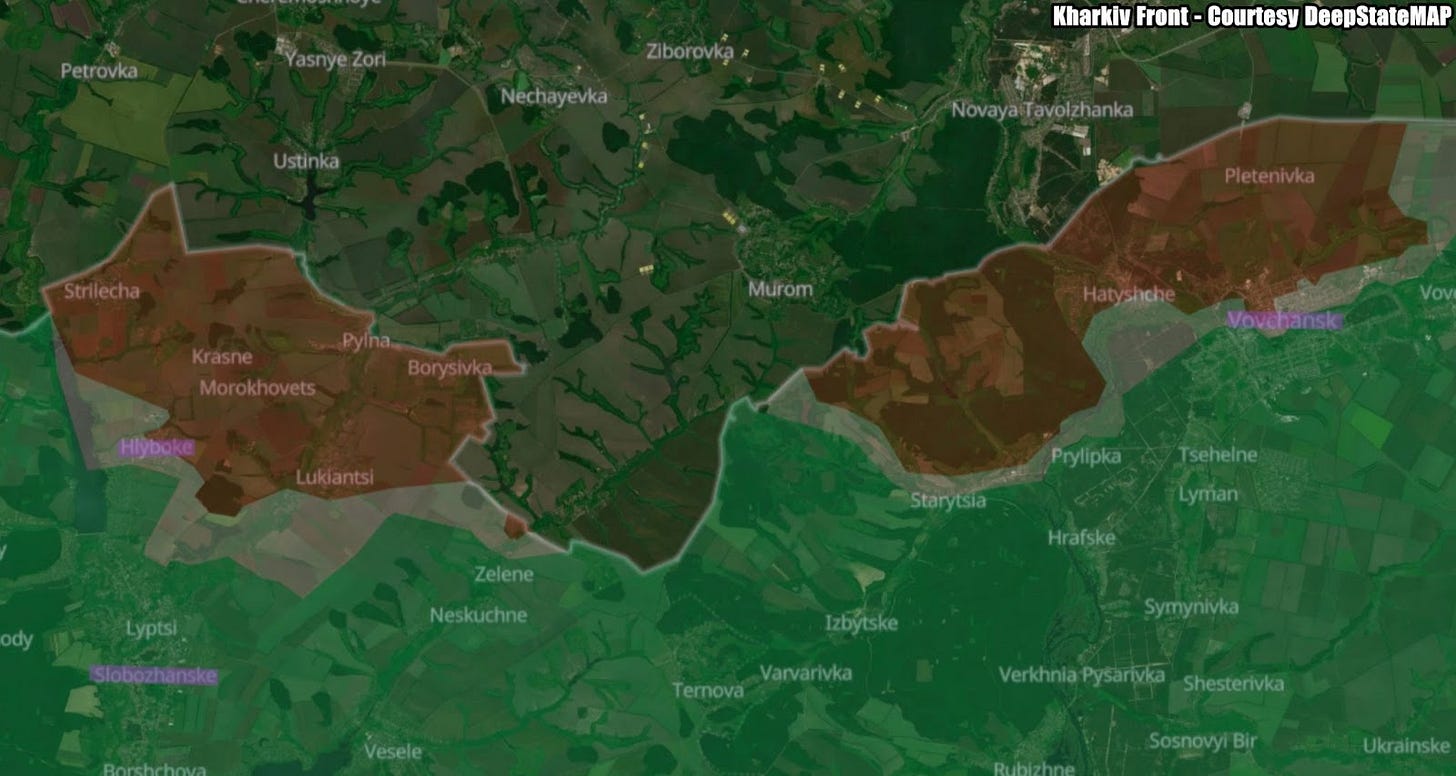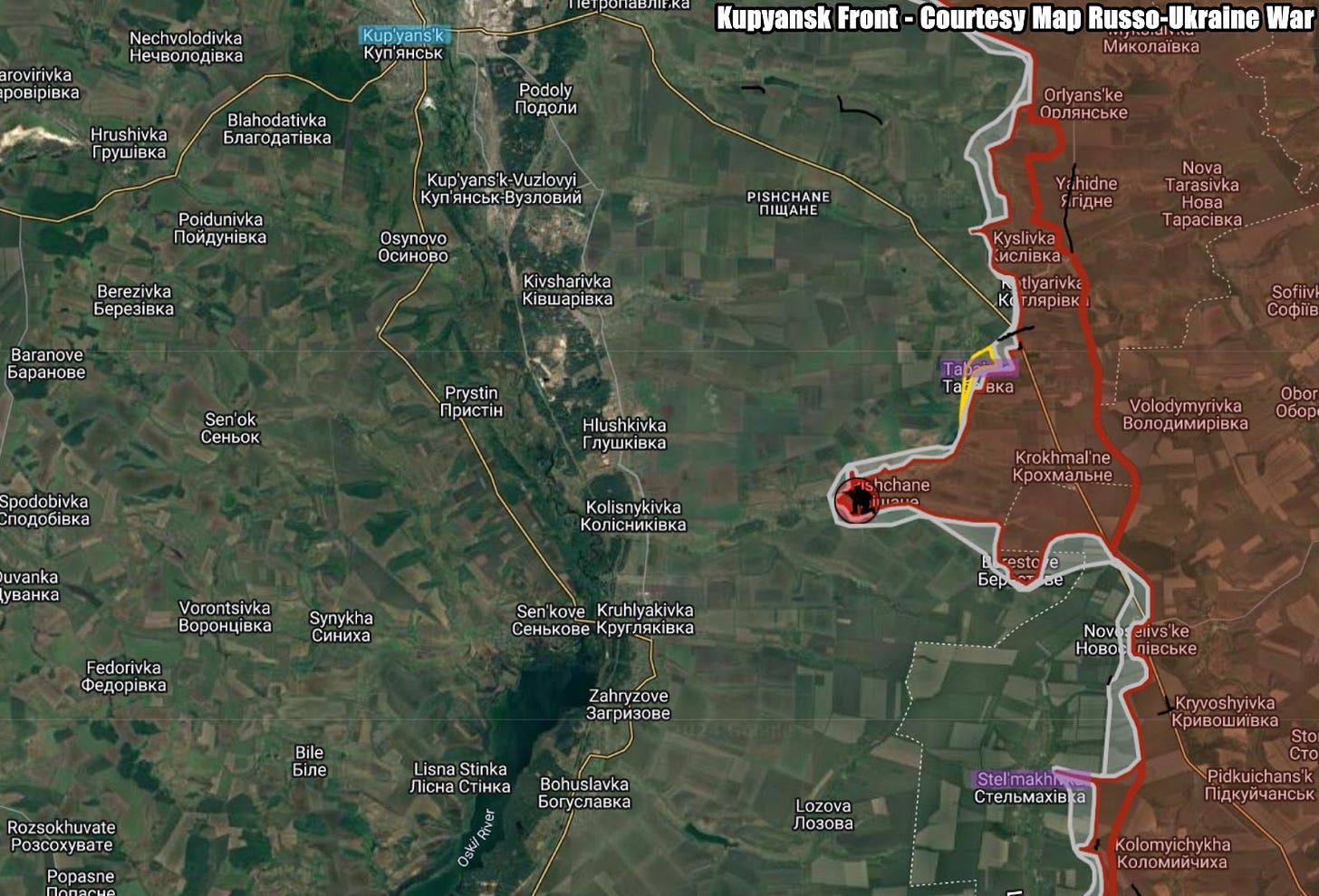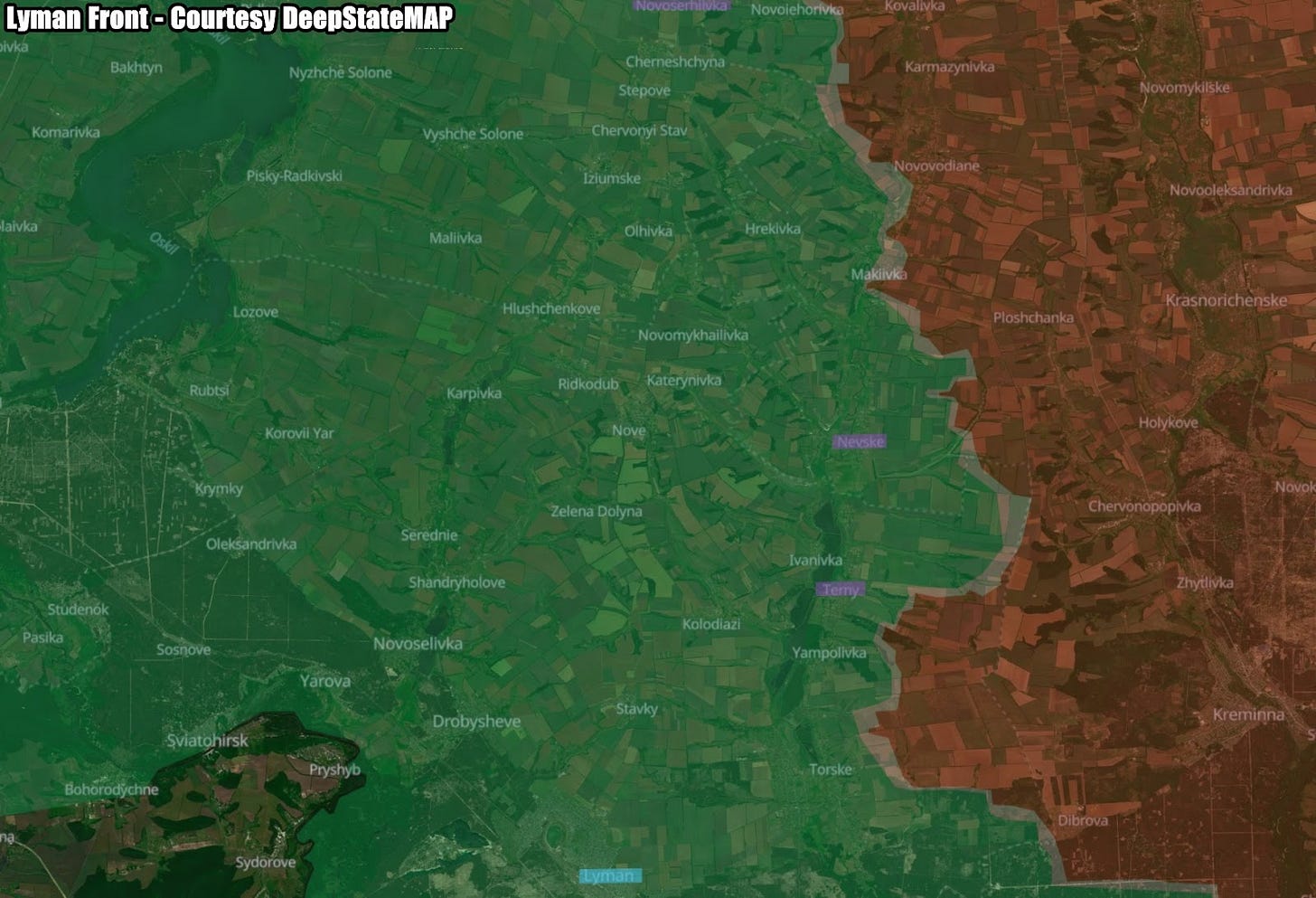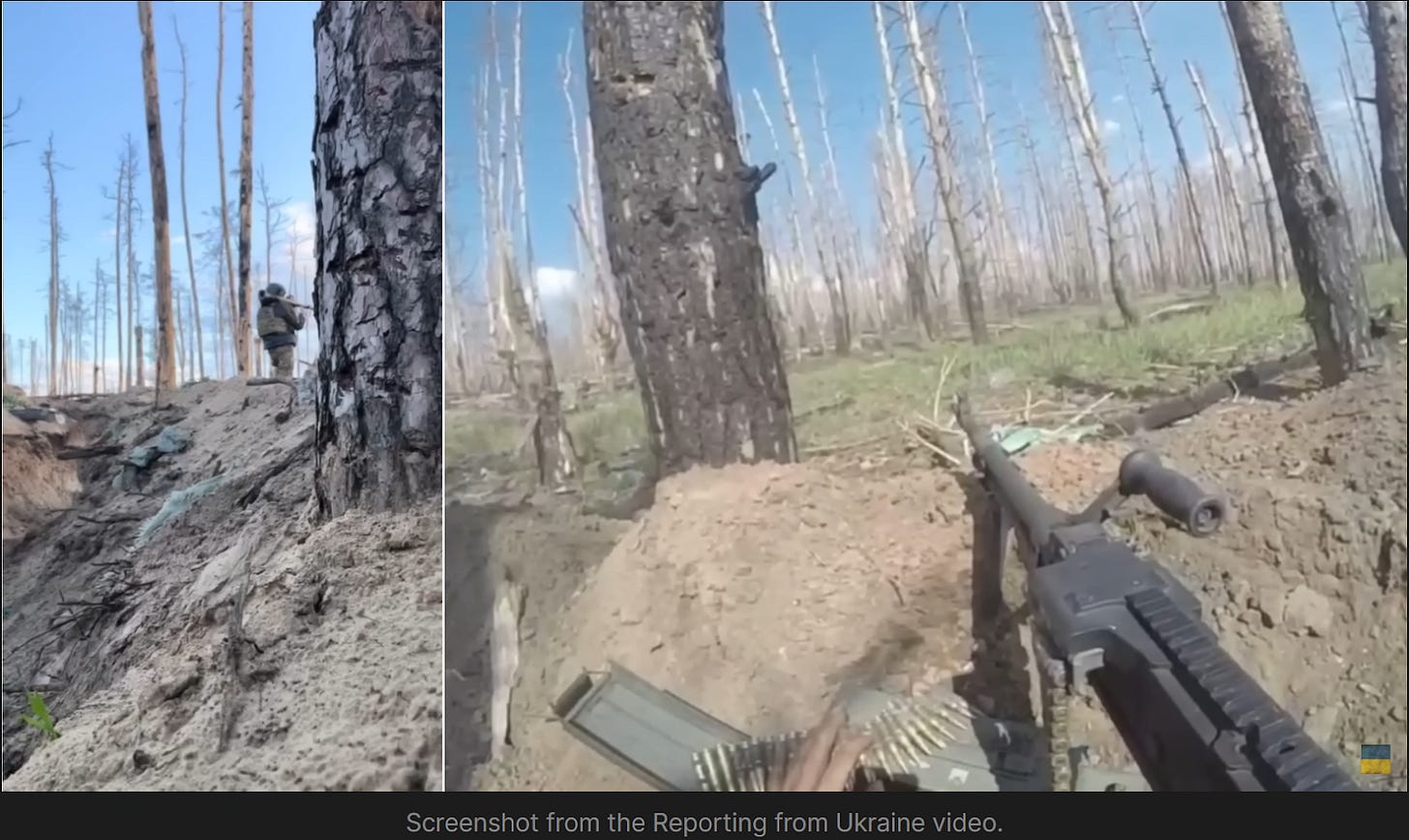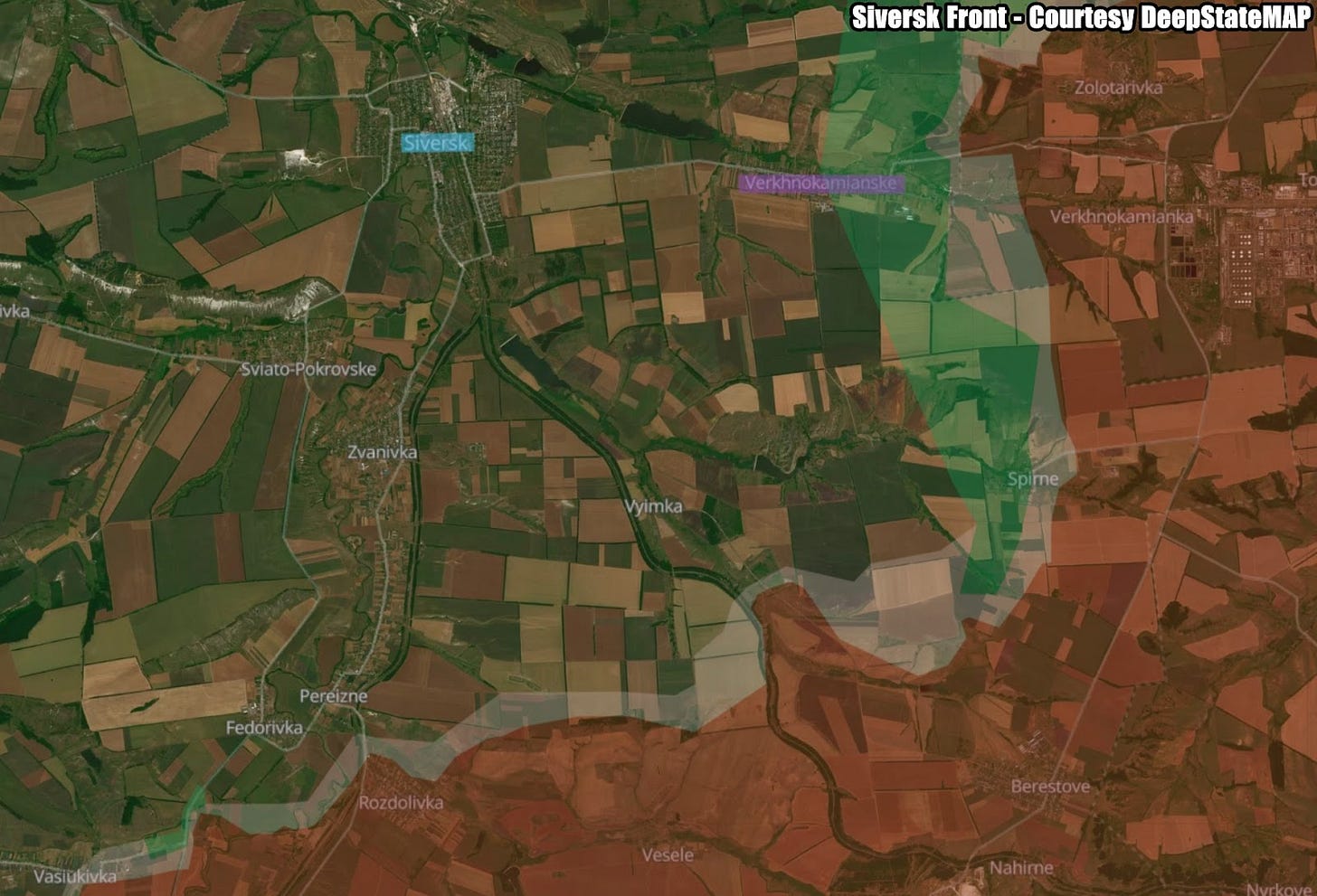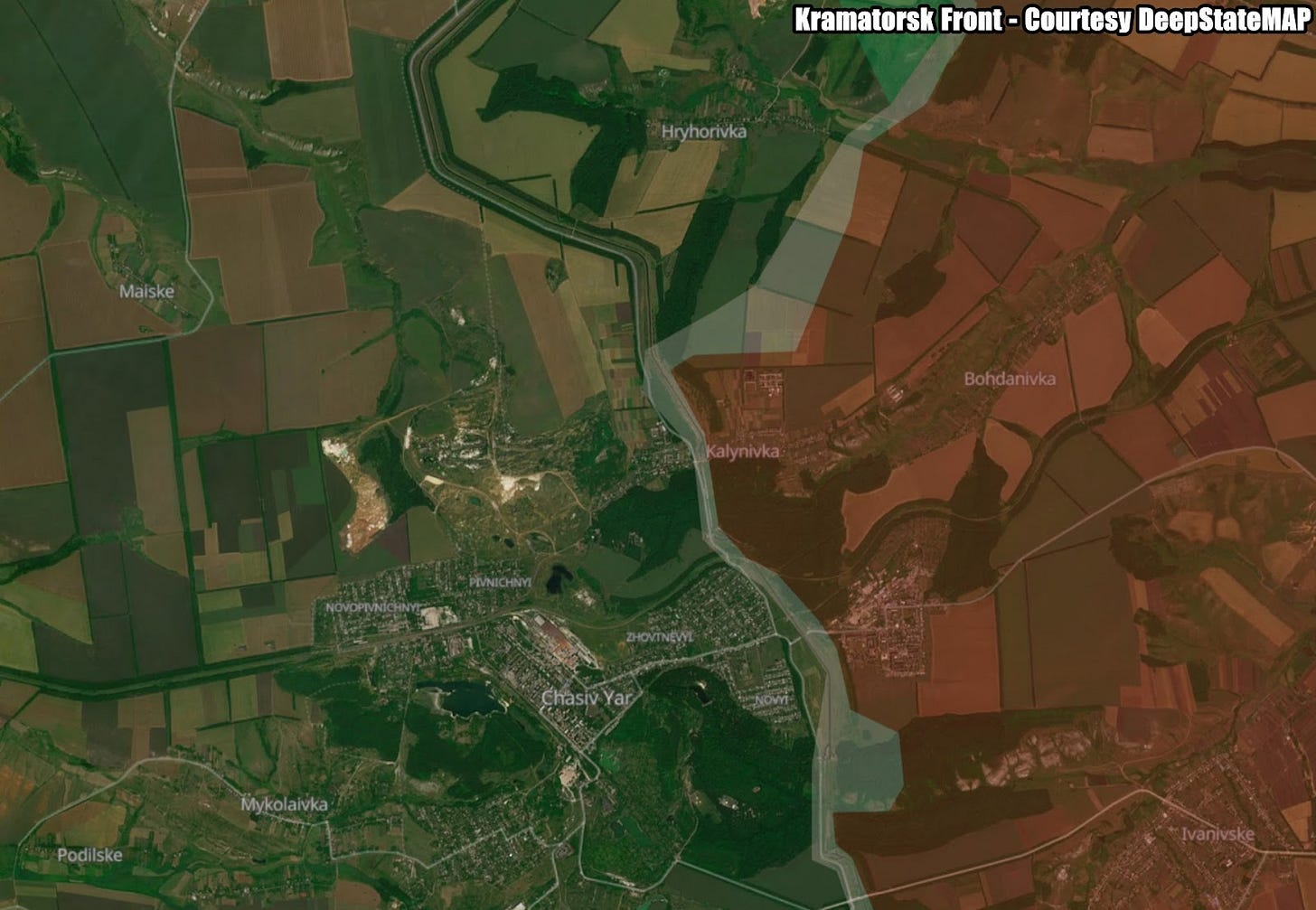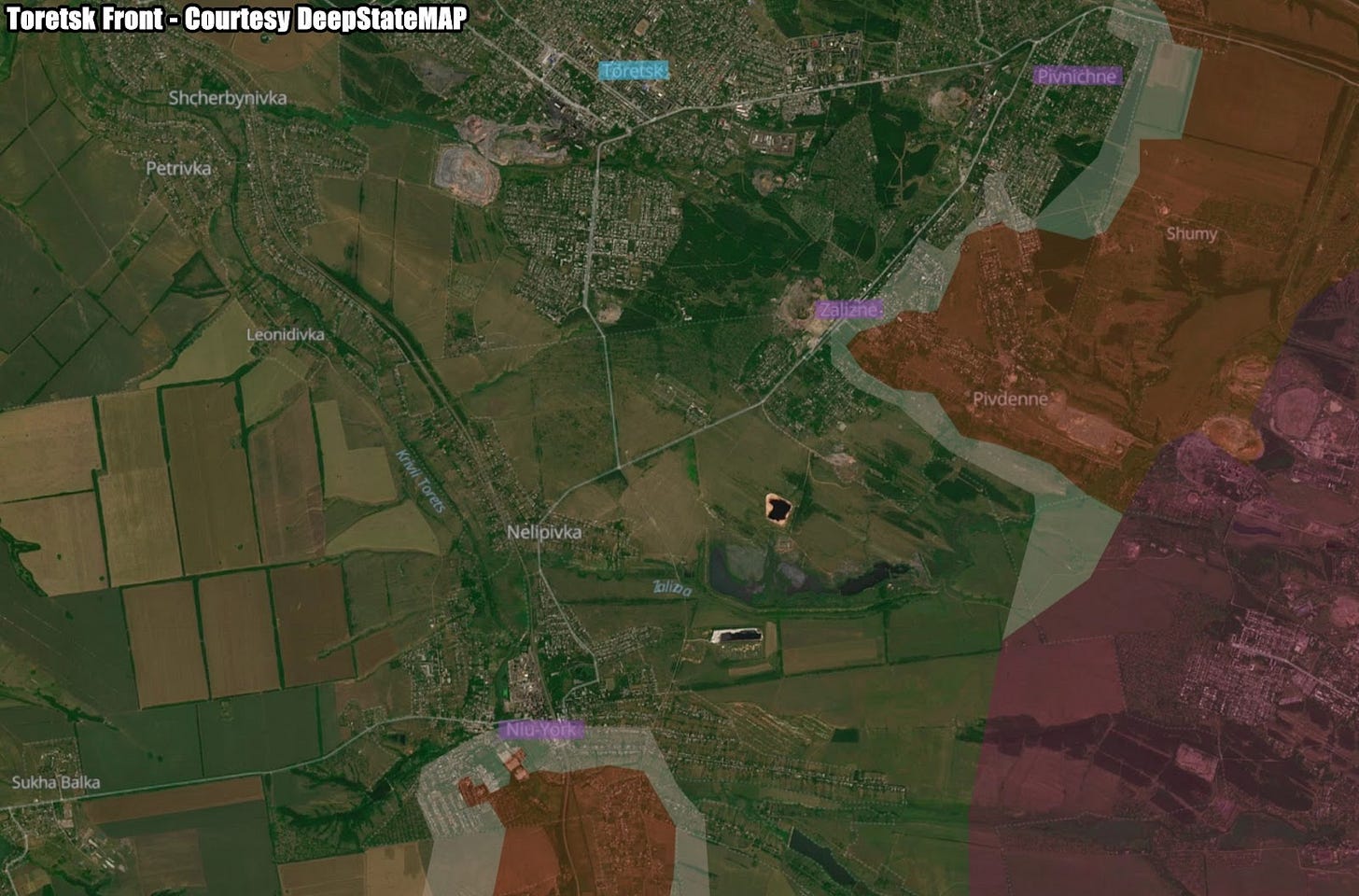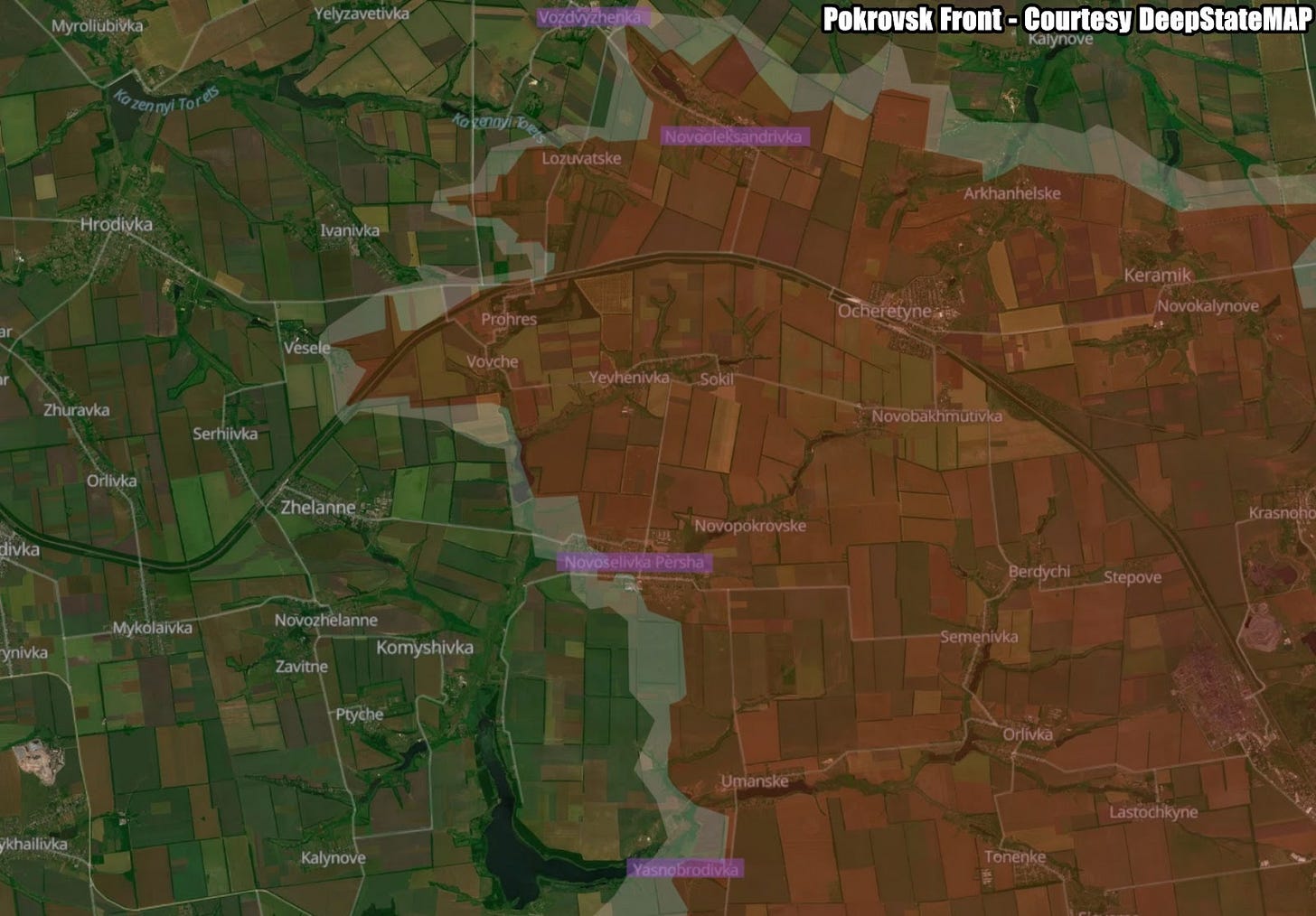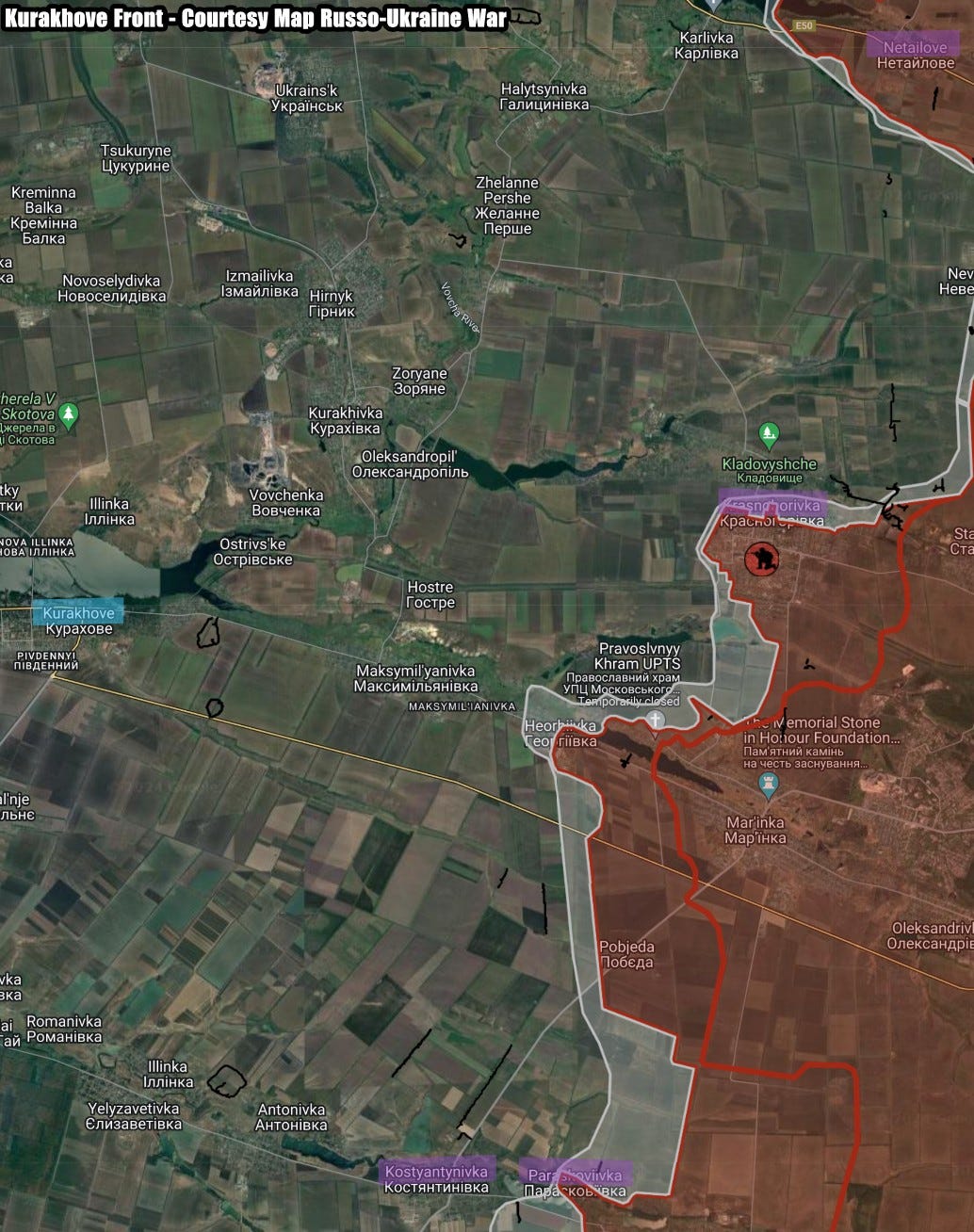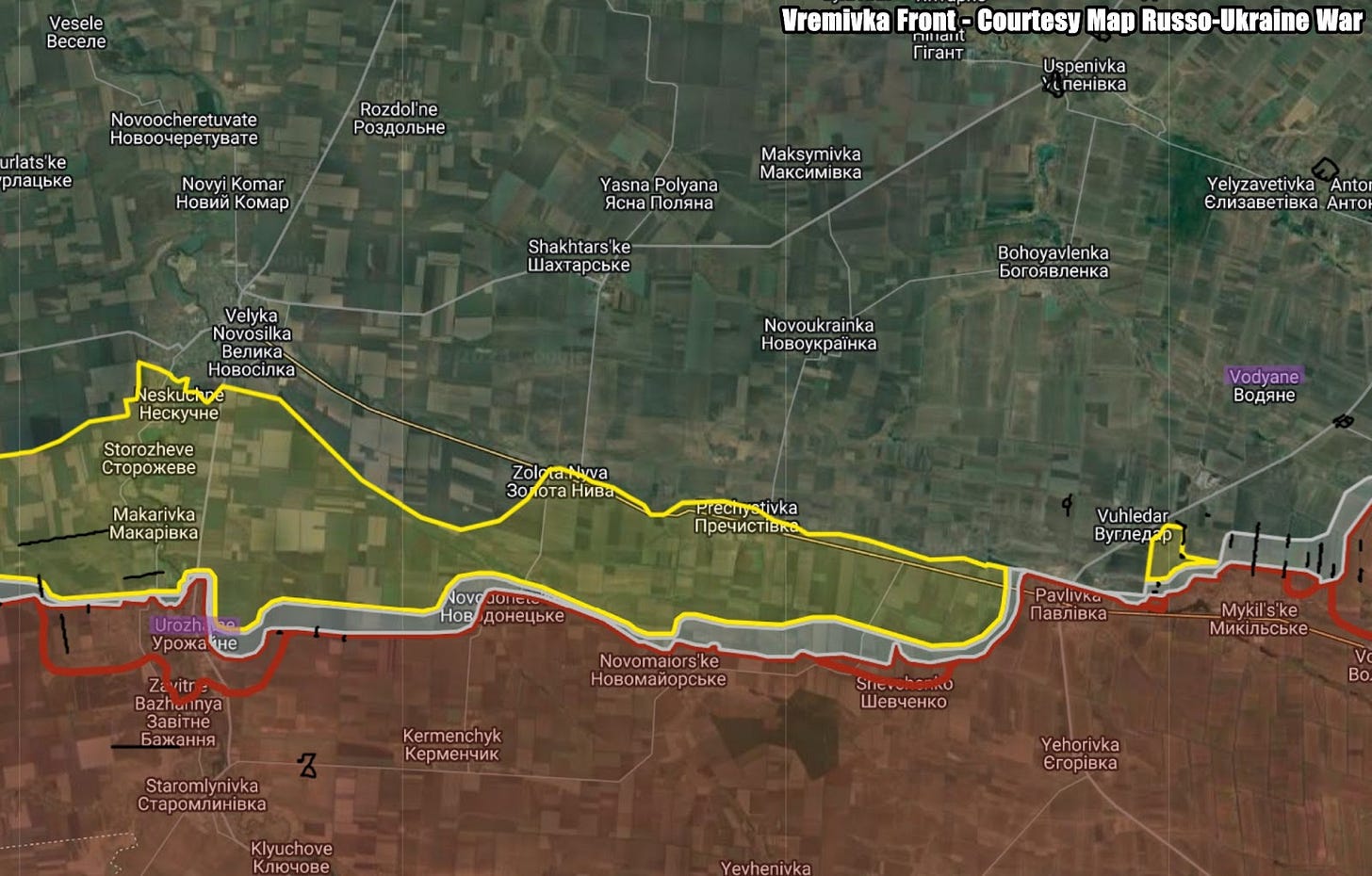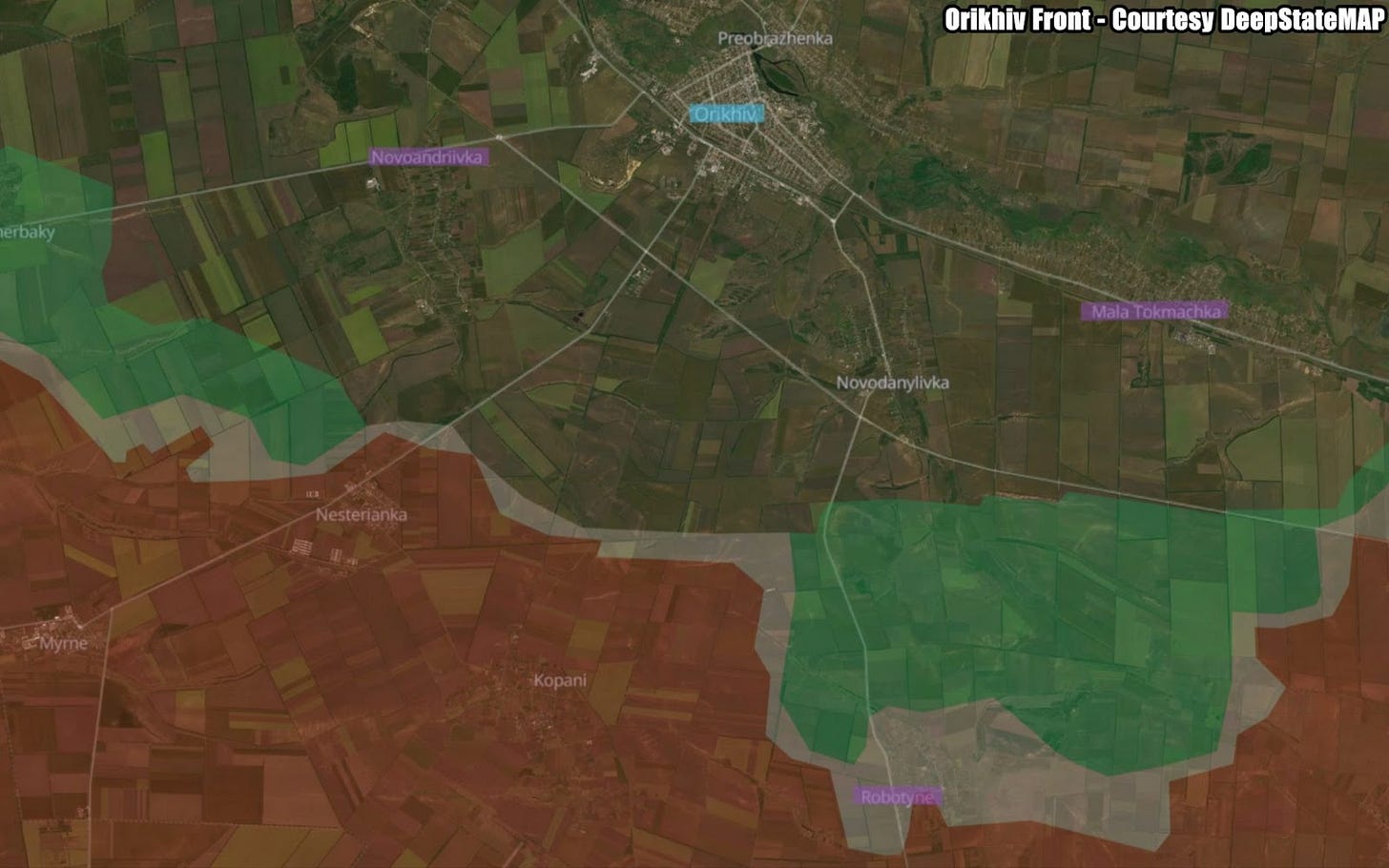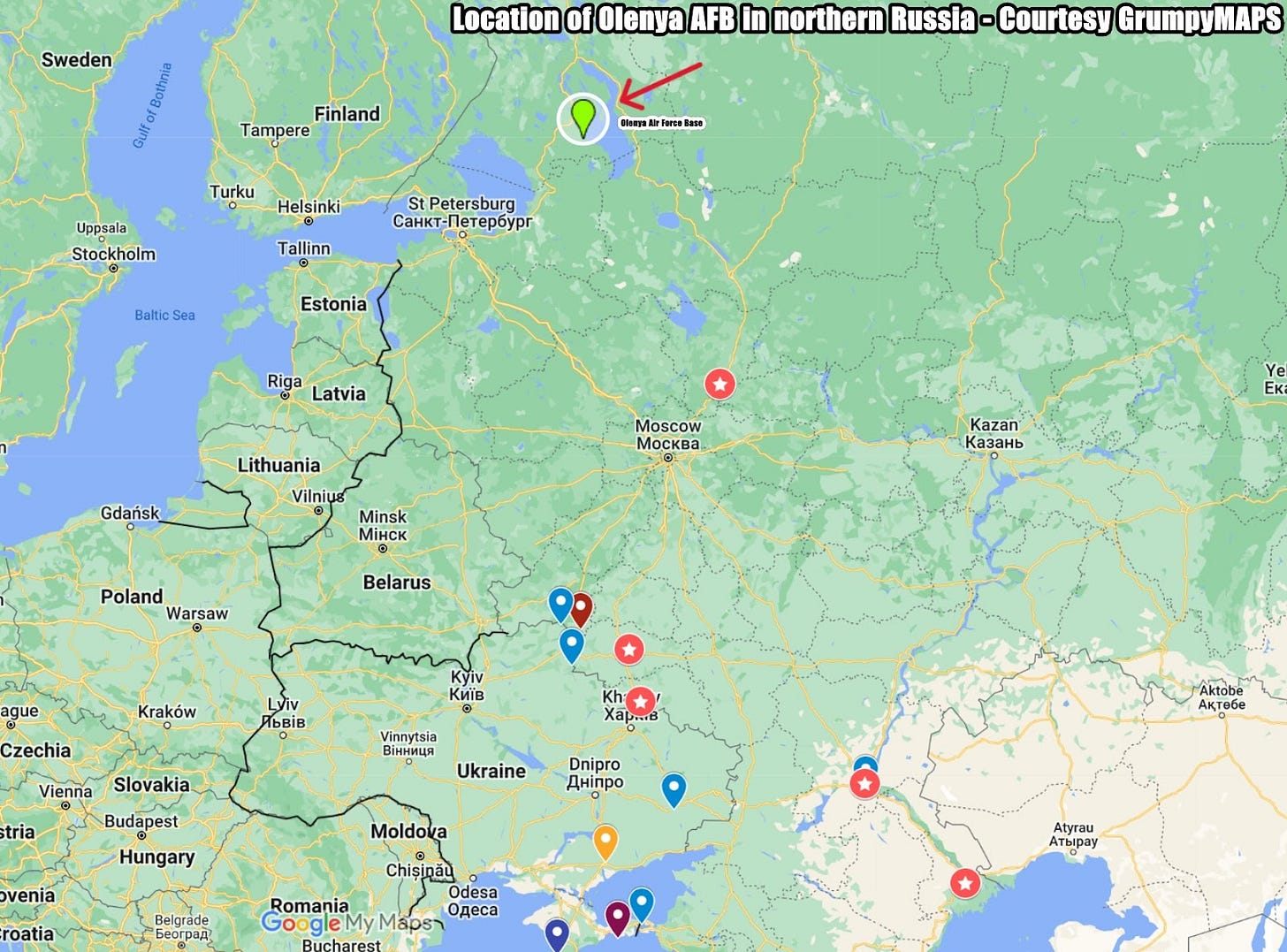Slava Ukraini! In early 2022 I began a Telegram channel aggregating news from a number of sources daily on the war in Ukraine. Since June 2023 I have provided a daily draft for the Ukraine War Brief Podcast collecting news from over 60 sources daily, much of which forms the basis of the script. While the Podcast is on hiatus I will make this Draft available here both on my own Substack and The People’s Media for those who wish to keep up with events on a daily basis.
ALONG THE CONTACT LINE
GSAFU Morning Report
The General Staff of the Armed Forces of Ukraine in its Operational Information update at 22:00 on July 26 stated that day 884 of the full-scale invasion of the Russian Federation against Ukraine was about to begin.
During the past day, 107 combat engagements took place. Over the past 24 hours, the enemy carried out 46 air strikes, 466 drone strikes and 3,163 artillery strikes across the positions of Ukrainian forces.
At the same time, Ukrainian soldiers continue to inflict losses in manpower and equipment on the occupying troops, exhausting the enemy along the entire front line and continue to disrupt the plans of Russian occupiers to advance deep into the territory of Ukraine.
Air Force Daily Report
On the night of July 27, 2024, the enemy attacked with a Kh-59/Kh-69 guided air missile from the airspace of the TOT of the Zaporizhia region and four "Shahed" strike UAVs from Primorsko-Akhtarsk - Russian Federation.
All targets were shot down by the forces and means of the Defense Forces of Ukraine in the Dnipropetrovsk, Poltava, Kharkiv and Kyiv regions.
In addition, during the past day and during the current day, air defence destroyed eight more air targets in the southern and northeastern directions: 4 reconnaissance UAVs "Supercam", 1 strike-reconnaissance UAV "Forpost", 1 UAV (type to be determined), 2 barrage munitions "Lancet".
The Khortytsia operational-strategic group
(Responsible for the northeastern part of Ukraine. )
Kharkiv axis: There were 9 Russian attacks near Hlyboke, Slobozhanske and Vovchansk. 1 battle continues.
Kupyansk axis: Russia attacked Ukrainian positions 6 times near the settlements of Tabaivka and Stelmahivka, 4 were repulsed and 2 continue.
Lyman axis: Russian troops attacked Ukrainian defenders 10 times in the areas of Novoserhiivka, Nevske and Torske. The situation is under control.
Ukraine advances in the Serebryanskyy Forest
There have been developments in the Serebryanskyy Forest sector over recent day as reported Euromaidan Press in their Frontline Report on July 27
Ukrainians set the stage for future counteroffensive operations, endangering the entire Russian salient toward the river. North of the forest, Russians have tried for over a year now to eliminate the Ukrainian bridgehead east of the Zherebets River, to cross it and take control of Lyman, consolidating their gains in the process. Ukrainian defences here held firm, for a large part, due to constant Ukrainian operations in the forest, undercutting Russian logistics and any attempt at a westward assault.
Russian military analysts noted that this opens up the possibility for Ukrainians to launch a localised counteroffensive in the forest to attack the Russian Dibrova-Kuzmyne-Kreminna line of settlements. If such a Ukrainian assault proves to be successful, instead of just harassing the Russian salient, Ukrainians would be able to cut it off completely, undoing over a year of Russian offensive efforts. To achieve such an ambitious goal, Ukrainians have to create ideal circumstances and take the most advantageous tactical and strategic positions. To get to that point, Ukrainians must first eliminate the threat of Russian attacks to focus all their preparations and resources on offensive actions.
Ukrainians continue to reinforce the forest area with manpower and strengthen their positions against Russian artillery and assaults. Ukrainian and International brigades active in the forest continue to engage in small-scale skirmishes with Russian units and positions. These brigades shared a multitude of footage showing them repulsing Russian attacks and harassing Russian positions with small arms fire, machine guns, and rocket-propelled grenades. Ukrainians were even able to advance a tank up to Russian trench fortifications, destroying them with the continuous, direct fire of high explosive grenades.
Siversk axis: Russian forces carried out 3 unsuccessful assaults in the vicinity of Verkhnokamianske, the situation is under control.
Kramatorsk axis: In the Chasiv Yar sector Russian forces attacked 6 times in the area of Hyrhorivka and Chasiv Yar. 2 battles are ongoing.
Toretsk axis: There have been 11 Russian attacks over that last day, 3 fights are still ongoing. All the efforts of the enemy were directed to the areas of Pivinchne Toretsk, Zalizne and Nui-York.
The Tavria operational-strategic group
(Responsible for the central-eastern and southeastern part of Ukraine.)
Pokrovsk axis: The greatest activity over the past day was in this sector. The enemy conducted 30 attacks against Ukrainian defences in this area over the last day in the vicinity of Vozdvizhenka, Novooleksandrivka, Novoselivka Persha and Yasnobrodivka.
Kurakhove axis: The invaders tried to advance 14 times in the areas of settlements Netailove, Krasnogorivka, Kostiantinivka and Paraskoviivka, three clashes are ongoing near Krasnogurivka.
Vremivka axis: The Russians conducted 9 offensive actions near Urozhaine and Vodiane
Orikhiv axis: The enemy made 5 unsuccessful attacks in the vicinity of Novoandriivka, Robotyne and Mala Tokmachka
The Odesa operational-strategic group
(Responsible for Kherson, Qırım, (also known as Crimea) and the Black Sea.)
Prydniprovsk axis: The situation in this sector has not experienced any significant changes.
TEMPORARILY OCCUPIED TERRITORIES
Nothing to report.
THE HOME FRONT
Ukrainian maritime corridor facilitates export of 60 million tonnes of cargo
Over 60 million tonnes of goods have been exported through the ports of Odesa in 11 months of operation of the Ukrainian maritime corridor, the Ukrainian Sea Ports Authority reports.
Overall, in 11 months of operation of the maritime corridor, over 60 million tonnes of cargo have been exported through the ports of Odesa.
This includes 40.6 million tonnes of grain cargo exported to 46 countries worldwide.
Zelenskyy visits Ukrainian soldiers undergoing treatment
Ukrainian President Volodymyr Zelenskyy has visited Ukrainian defenders undergoing treatment and presented them with state awards, the President reported on Telegram.
During his visit to a medical facility, he talked with soldiers undergoing treatment and presented them with state awards.
Zelenskyy thanked them for defending Ukraine, for their strength, and "for everything they do to ensure that our country stands strong."
Earlier reports said that Zelensky had presented state awards to 350 service members of the National Guard, the State Border Guard Service, representatives of the State Bureau of Investigation and one rescue worker, including 111 posthumously.
RUSSIAN WORLD
Ukrainian drones attack three Russian airfields on July 27
The Ukrainian Defense Ministry's Main Intelligence Directorate (HUR) conducted an operation in Russia in the early morning hours of July 27, attacking three military airfields, hitting an oil refinery and damaging a supersonic bomber. Ukrinform reports.
Sources in Ukrainian intelligence told Ukrinform that drones had attacked the military airfield in Engels, Saratov region, the Dyagilevo military airfield in the Ryazan region, and the Olenya military airfield in the Murmansk region.
An oil refinery in Ryazan was also targeted in the kamikaze drone attack.
According to eyewitnesses, the first explosions were recorded at the Dyagilevo air base at around 06:00 local time.
Social media channels reported hearing at least three explosions. Local users published a video of drones flying in the direction of the airfield and a picture showing a plume of black smoke rising above the air base.
The air base is home to the 43rd Guards Center of Combat Application and Air Crew Training. It houses Tu-95MS, Tu-22M3, Tu-134UBL and Il-78 aircraft and an aircraft repair plant.
The explosions at the Engels Air Base, which houses Russian strategic bombers, rang out at around 08:00.
Local social media channels reported that Russia's air defense forces unsuccessfully tried to shoot down UAVs but then explosions were heard.
According to preliminary reports, a UAV strike on the Olenya airfield damaged a Tu-22M3 long-range supersonic bomber. The airfield is located about 1,800 kilometers from the Ukrainian border, close to the arctic circle.
Russia's Defense Ministry stated that at least 12 kamikaze drones had been shot down in the Kursk, Belgorod, Rostov, Bryansk and Lipetsk regions.
The results of drone strikes on other Russian military facilities are currently being clarified, Ukrainian intelligence said.
Russian Su-34 crashes near Volgograd
A Russian Su-34 fighter-bomber aircraft crashed in Volgograd Oblast while performing a scheduled training flight; the crew ejected local Russian propaganda outlets report.
Russian authorities state that the pilots' lives are not in danger. The preliminary cause of the fighter jet's crash is technical malfunction.
Residents are posting photos and videos of smoke over the forest near the city.
NEWS WORLDWIDE
French government does not rule out foreign involvement in rail sabotage
France's interior minister said on Saturday he could not rule out foreign involvement in an attack that sabotaged signal stations and cables on the country's high-speed rail network, causing travel chaos on the opening day of the Olympic Games. Reuters reports.
Friday's pre-dawn attacks damaged infrastructure along the lines connecting Paris with cities such as Lille in the north, Bordeaux in the west and Strasbourg in the east. Another attack on the Paris-Marseille line was foiled, SNCF has said.
There has been no immediate claim of responsibility.
"Who is responsible? Either it's from within, or it's been ordered from abroad, it's too early to say," Interior Minister Gerald Darmanin told France 2 television.
He added: "We have uncovered a certain number of elements which lead us to believe that we will know fairly quickly who is responsible."
Traffic on France's high-speed rail network should be back to normal by Monday, Transport Minister Patrice Vergriete and rail operator SNCF's chief Jean-Pierre Farandou told reporters on Saturday.
SNCF reiterated that transport plans for teams competing in the Paris 2024 Olympics would be guaranteed.
On Friday, 100,000 people could not take their trains, and another 150,000 faced delays but eventually got to their destinations, Vergriete said.
MILITARY & TECH
Ukrainian electronic warfare units thwart nearly 8,000 Russian drone missions in a week
Over the week from July 18 to 24, Ukrainian electronic warfare (EW) units successfully disrupted almost 8,000 Russian reconnaissance and FPV drone missions, according to a report from General Oleksandr Pavliuk, Commander of the Ukrainian Ground Forces.
This report underscores the growing strength of Ukrainian electronic warfare, which previously was relatively weak in the Ukrainian army. At the same time, the report showcases the scale of Russian drone use, now reaching 1,000 drones per day.
The breakdown of the thwarted drones includes 4,313 fixed-wing drones and 3,603 FPV drones. Additionally, Ukrainian EW and electronic intelligence units identified 43 enemy electronic warfare stations during the same period.
Gen. Pavliuk expressed his gratitude to the EW units for their constant and effective combat operations. He emphasized the crucial role these units play in saving the lives of Ukrainian soldiers, securing positions and weaponry, and enabling Ukrainian forces to successfully carry out both defensive and offensive tasks.
Ukraine Uses Science Fiction Technology To Neutralise Russia’s Nastiest Mine
Ukrainian engineers have found a smart solution to one of Russia’s nastiest weapons. The NVU Okhota ("Hunting") antipersonnel mine is meant to be impossible to remove, with a sophisticated sensor to detect and injure or kill engineers long before they find it. But a gadget dropped from a drone can defang this lethal device from a safe distance. Forbes reported on July 26.
The Hunting series was originally developed back in the 1970s to make minefields deadlier. Sappers were getting better at detecting and removing or destroying mines, so a new weapon was needed to disrupt attempts at tackling a minefield.
The Hunting system consists of up to five standard anti-personnel mines and a special sensing device to control them. The usual type are OZM-72 “Frog” jumping mines, which are normally actuated by a tripwire; when triggered the Frog throws a grenade into the air which detonates at waist height, throwing shrapnel with a lethal radius of 25 meters/ 82 feel. Hunting can also be rigged with MON-50 claymore-type directional mines or the POMZ-2 mine-on-a-stick.
The air-bursting OZM-72 will injure both people standing upright and those on the ground trying to crawl. Having Hunting linked to five mines ensures that multiple rescue attempts can be hit and there will be few if any survivors.
Hunting is claimed to reliably identify moving humans, whether they are running, walking, crawling, or skiing, and distinguish them from animals and vehicles in all weather conditions, with an error rate of just 0.4% . It can be calibrated to adjust to particular terrain types such as soft or rocky ground.
The later version of Hunting also has a timer mechanism which activates and deactivates it at set times of day, giving a safe window for patrols to pass through – if they have enough confidence in it.
Russian military blogger “Combat Engineer” who has a Telegram channel with 58,000 subscribers concentrating on bomb disposal and unexploded munitions, noted earlier this month that the Ukrainians have come up with an answer to Hunting. It is a metal cylinder with a spike, dropped from a drone.
The device has the name ‘ARTEMIDA’ on the side. This is the Ukrainian name for the Greek Artemis – the goddess of hunting.
According to Combat Engineer, Artemida emits a series of pulses which imitate human footsteps. This seismic simulator fools Hunting’s sensor into firing off all its mines harmlessly, disarming it. Artemida does not appear on Ukrainian sites; all we know is what Combat Engineer reports.
It is a neat idea, although similar concepts have been proposed before. There is an obvious similarity with the Thumper in Frank Herbert’s 1965 SF novel Dune which is also stuck in the ground to imitate the vibrations of human footfalls. The thumper is a lure for carnivorous sandworms though, rather than antipersonnel mines.
That’s it for today’s Draft folks if you would like to keep up with events in Ukraine daily please consider subscribing, its free!
Feel free to share this update with your friends. Heroyam Slava!







